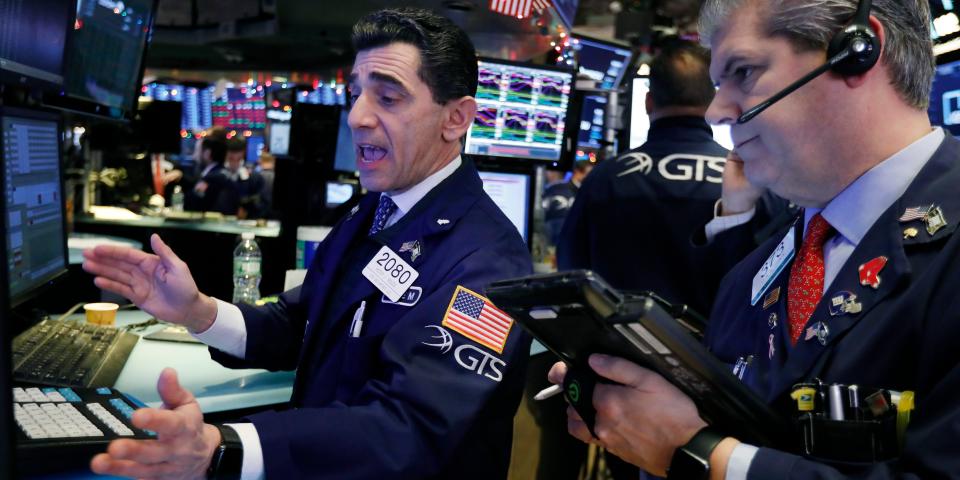
-
The sell-off that battered stocks in April probably won’t stretch into May, according to Fundstrat’s Tom Lee.
-
The uber-bullish forecaster pointed to five dovish signs the Fed gave after its policy meeting on Wednesday
-
That suggests equities will end the month of May with a gain, Lee predicted.
The stock market’s sell-off could be over, and five bullish signals the Fed gave at its latest policy meeting are setting the stage for gains in May, according to Fundstrat’s head of research Tom Lee.
In a video sent to Fundstrat clients on Wednesday, Lee pointed to the May Federal Open Markets Committee meeting, which sparked a brief rally in stocks. Central bankers opted to keep interest rates level and suggested a rate hike was unlikely, fueling bullish sentiment among traders.
“That gets us to a situation where I’m still confidence that April is going to be the end of that selloff,” Lee said. “I think May’s going to end up being an up month.
He pointed to five dovish signals the central bank gave markets, which suggests that the path ahead for stocks looks a lot brighter:
1. The Fed is slowing its pace of quantitative tightening
Central bankers said they would slow their pace of balance sheet reductions, which is a positive for stocks. The Fed has shed over a trillion from its balance sheet in order to tighten financial conditions and help control inflation.
Balance sheet reductions will slow from $60 billion to $25 billion a month starting in June, the central bank said in a statement.
2. Inflation is pointing lower
Inflation came in hotter-than-expected all throughout the first quarter, and prices in the economy still remain above the Fed’s 2% target. But inflation is on the decline overall, Lee said: Consumer prices grew 3.5% year-per-year in March, down from a peak of 9.1% growth posted in mid-2022.
In prepared remarks, Powell added that he was confident inflation would continue to fall toward the Fed’s long-run target this year. Continued disinflation could give the Fed more leeway to cut rates later in 2024, Lee added.
3. Rate cuts can coexist with a strong labor market
Some investors have fretted over the robust labor market, as the Fed could raise interest rates to weaken too-strong hiring conditions.
But Powell has suggested that won’t be the case, Lee said. The Fed chief noted that the labor market was “really tight” last year, yet the economy still saw inflation fall while growth remained strong.
“A healthy labor market doesn’t preclude rate cuts,” Lee said.
4. The economy isn’t facing stagflation
Market participants have also been eyeing the threat of stagflation, a phenomenon where prices keep rising while economic growth remains sluggish. Fears of that scenario began to pick up as investors took in above-expected inflation prints over the first quarter, while first-quarter GDP came in below-expected.
But Powell seemed “puzzled” over that possibility, Lee said, with the central bank chief pointing to “solid” growth in the economy in his presser. Other economists have also dismissed stagflation risks for now, given that consumer spending and the job market remain in full-force.
5. A rate hike is unlikely
Powell added that the Fed’s next move was unlikely to be a rate hike. That was comforting to investors, given that many have come to fear more tightening as the economy stays strong and inflation moves in the wrong direction this year.
Investors are now pricing in a 69% chance the Fed could rate rates once or twice by the end of the year, according to the CME FedWatch tool.
Stock investors have already perked up on a brighter outlook for Fed rate cuts this year. Stocks reacted positively to the Wednesday Fed meeting. Meanwhile, nearly 40% of investors said they were bullish on stocks over the next six months, according to the latest AAII Investor Sentiment Survey, up from 32% of respondents who said they were bullish the prior week.
Read the original article on Business Insider














